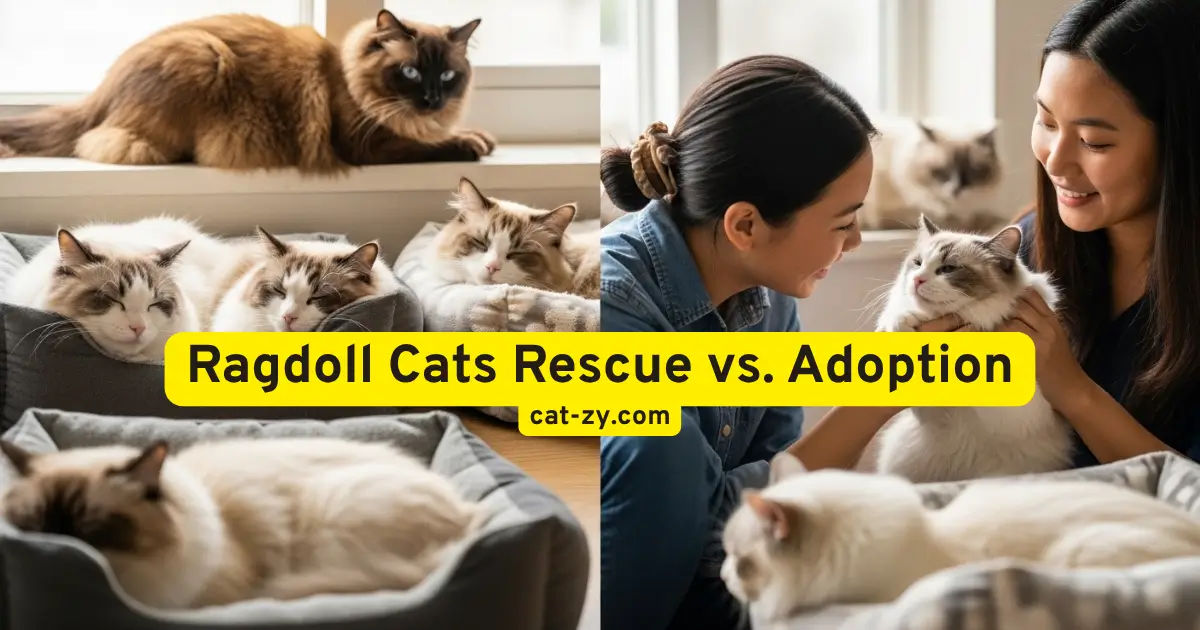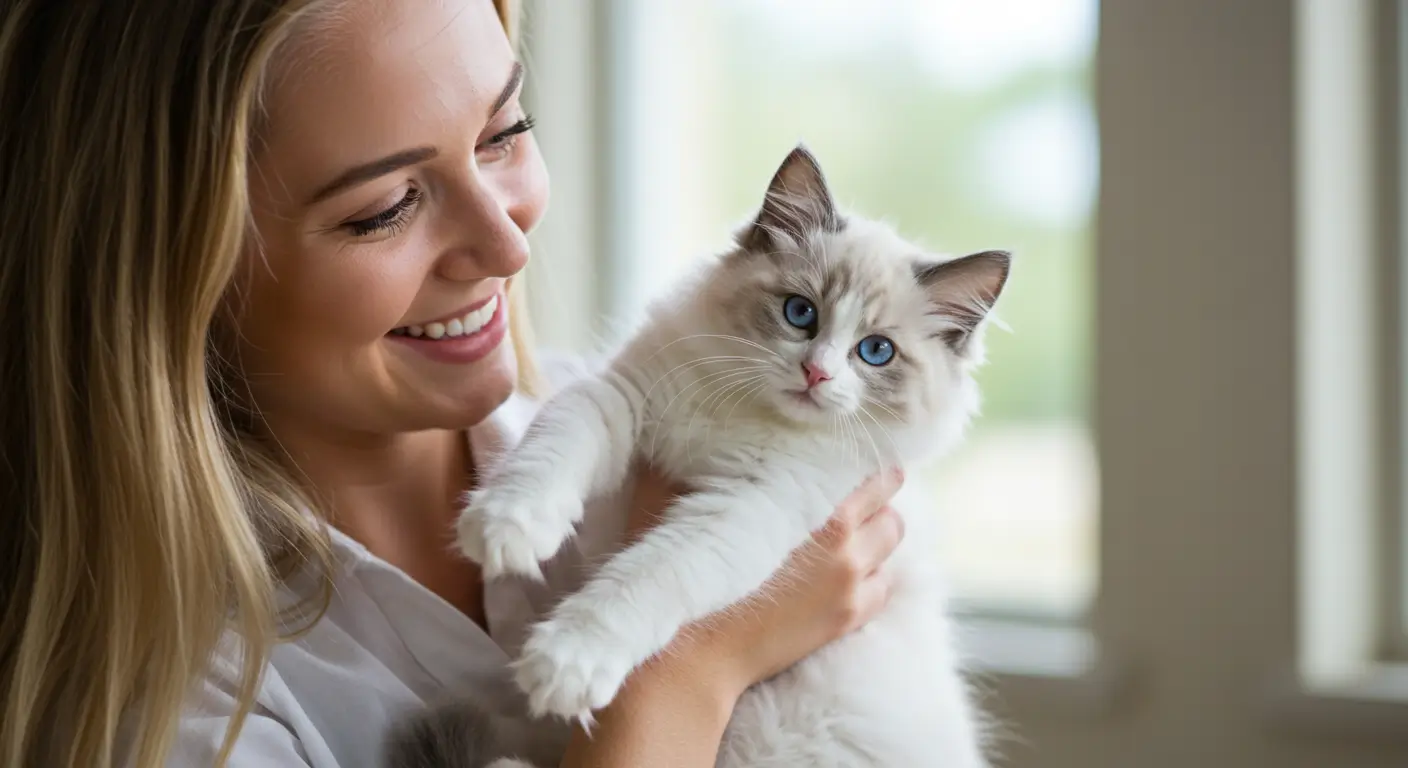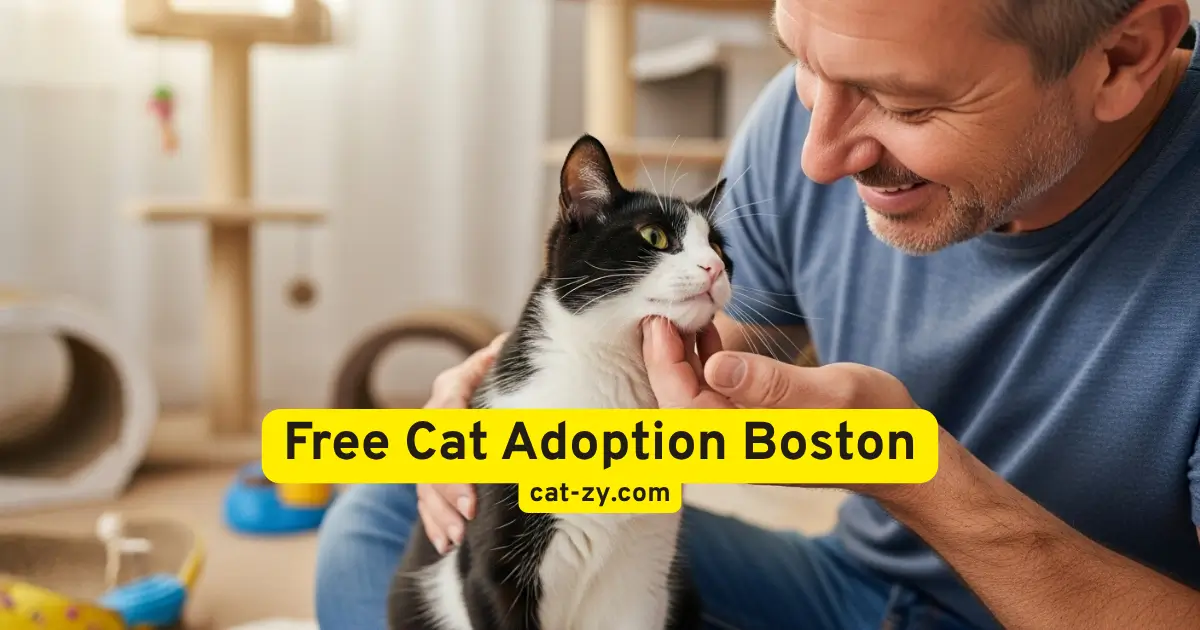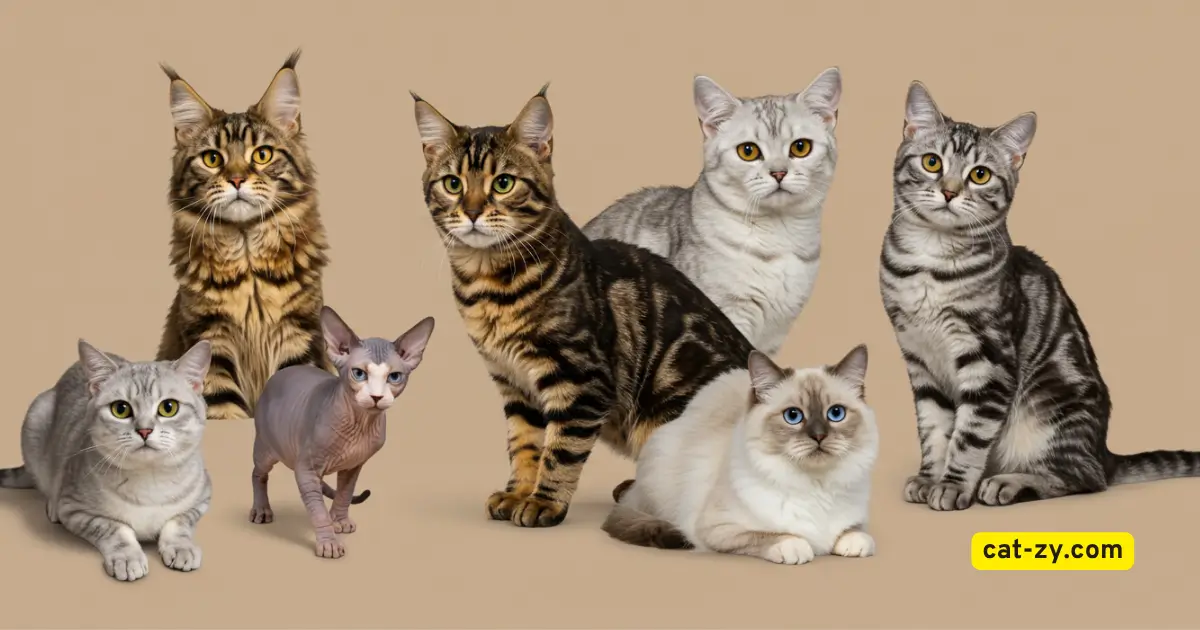Ragdoll Cats Rescue vs. Adoption: Key Differences
Thinking of adding a gentle companion to your family? If Ragdolls’ loving nature appeals to you, you might be deciding between rescue and adoption. This choice is more than finding a pet. It’s about providing a worthy feline with a nurturing household.
Rescuing a cat can be a rewarding experience. It offers a fresh start to a feline requiring assistance. Adopting from a reputable breeder or shelter means you get a healthy pet with a known background. Knowing the key differences between these options helps you make a choice that fits your lifestyle and preferences.
Table of Contents
Understanding Ragdoll Cats: Breed Overview
Ragdoll cats are cherished for their stunning appearance and gentle disposition. They are big, have soft fur, and love people a lot.
Physical Characteristics and Temperament
Ragdoll cats possess a robust physique and plush, smooth fur. They come in many colors and patterns. Their bright blue eyes and tendency to go limp when picked up earn them the name “Ragdoll.”
They are calm and affectionate. This makes them great for families and those who want a relaxed pet.
Health Considerations for Ragdoll Cats
Ragdoll cats can face health issues like hypertrophic cardiomyopathy and hip dysplasia. Regular vet visits and a healthy diet can help. Knowing about these health considerations is key to caring for your Ragdoll cat.
The World of Ragdoll Cats: Rescue vs. Adoption
Ragdoll cats are adored for their luxurious coats and affectionate personalities. The debate between rescue and adoption is growing. You may question the reasons behind some Ragdoll cats requiring new families.
The Growing Popularity of Ragdolls
Ragdoll cats are becoming more popular. They are recognized for their peaceful nature and gorgeous, silky fur. Their affectionate character makes them excellent companions for numerous households. This has led to more people wanting to adopt or rescue Ragdoll cats.
Why Ragdolls End Up Needing New Homes
Even though they’re popular, some Ragdoll cats need new homes. Reasons include changes in their owners’ lives, allergies, or being misunderstood or not properly cared for. Knowing these reasons is key before getting a Ragdoll cat.
Understanding why Ragdoll cats need new homes helps you decide between rescue and adoption. This knowledge ensures a smooth start for you and your new pet.
What is Ragdoll Cat Rescue?
Ragdoll cat rescue groups help find new homes for cats in need. They offer a safe place for Ragdolls until they find their forever homes.
These groups have volunteers, foster homes, and sometimes shelters. Knowing how they work helps us appreciate their efforts in rescuing and rehoming cats.
How Rescue Organizations Work
Ragdoll cat rescue groups use a network of foster homes to care for cats. They also have volunteers for tasks like fundraising and social media. The rescue process includes intake, rehabilitation if needed, and adoption into a new home.
Types of Ragdoll Rescue Groups
There are different types of Ragdoll rescue groups. Some focus only on Ragdolls, while others help all cats. Groups can be local or national. Knowing the differences enables you to find the right group for adopting a Ragdoll.
What is Ragdoll Cat Adoption?
Ragdoll cat adoption is a great way to give a loving home to a cat in need. When you adopt a Ragdoll cat, you’re gaining more than just a companion. You’re also making room in a shelter for another cat. The adoption journey requires multiple important factors to guarantee compatibility between you and your feline.
Adoption from Shelters vs. Breeders
Adopting a Ragdoll from a shelter is rewarding. You’re giving a home to a cat that might have been abandoned. Shelters have a variety of cats, including purebred Ragdolls.
Adopting from a reputable breeder offers advantages. You’ll know the cat’s lineage, health clearances, and temperament. Breeders specialize in specific breeds, providing detailed information about the cat’s ancestry and potential characteristics.
Private Adoptions and Rehoming
Private adoptions and rehoming are other ways to find a Ragdoll. This can involve adopting directly from an owner who is rehoming their cat. It’s crucial to ensure that private adoptions are handled responsibly, with proper veterinary checks and legal agreements in place to protect both the adopter and the cat.
The Rescue Process Explained
The cat rescue process is designed to find the best homes for Ragdoll cats. It includes several steps, from the first application to ongoing support after adoption.
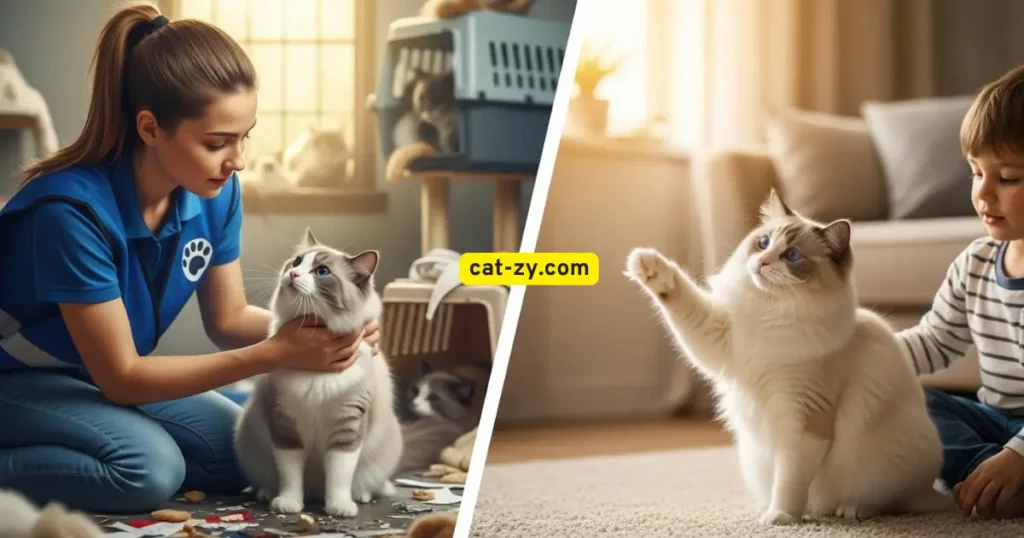
Application and Screening Procedures
Starting to rescue a Ragdoll cat means filling out an adoption application. This form helps organizations understand your lifestyle and experience with cats. They also want to know about the home you can offer.
The screening process may include interviews. These can be in-person or over the phone. They help figure out if you’re a good fit as a pet owner.
This screening is key. It ensures that cats go to homes where they’ll be loved and cared for. It’s a way for rescue groups to match cats with the right owners.
Home Visits and Follow-up Support
Some rescue groups do home visits as part of the adoption process. They come to see where the cat will live. They also advise on making your home safe for a Ragdoll cat.
After you adopt, many groups offer follow-up support. They help with the transition and answer any questions. This support is very helpful in the first few months with your new cat.
The Adoption Process Explained
Thinking about getting a Ragdoll cat? It’s important to know the cat adoption process. This can change if you adopt from a shelter or a breeder.
Adopting a Ragdoll cat is easy if you’re ready. First, learn about the adoption procedures you’ll face.
Shelter Adoption Procedures
Shelter adoption starts with an application and an interview. An adoption counselor will check if your home is right for a Ragdoll cat.
Breeder Adoption Procedures
Breeder adoption is more detailed. You’ll need to fill out a long application, have a home visit, and might wait. Responsible breeders ensure their Ragdoll cats find caring families.
Legal Considerations
There are legal considerations when adopting a cat. These include spay/neuter laws, vaccination records, and care contracts.
Understanding the feline adoption journey prepares you for Ragdoll cat guardianship. It ensures a happy start for you and your new pet.
Cost Comparison: Rescue vs. Adoption
Choosing to rescue or adopt a Ragdoll cat comes with different costs. It’s important to understand these costs to make a choice that fits your budget.

Typical Fees for Rescued Ragdolls
Rescue organizations collect fees to fund the feline’s medical care. This includes spaying/neutering, vaccinations, and microchipping. The average rescue fee for a Ragdoll cat ranges from $100 to $300. The exact fee depends on the group and the cat’s needs.
Typical Fees for Adopted Ragdolls
Adoption fees vary a lot. Shelters may charge between $50 – $200. Breeders might ask for $600 to $1,200 for a purebred Ragdoll. These fees usually include initial vaccinations and spaying/neutering.
Long-term Financial Considerations
There are ongoing costs beyond the initial fees. These include food, litter, vet bills, and emergencies. It’s estimated that owning a cat can cost around $1,000 to $1,500 per year. Budgeting for these costs is essential for your Ragdoll cat’s well-being and joy.
Health and Background Considerations
Before you decide to rescue or adopt a Ragdoll cat, think about their health and background. It’s crucial to ensure you can provide the proper care and environment they require.
Medical History in Rescue Situations
Ragdoll cats from rescue situations might have unclear or complex medical histories. It’s crucial to get as much info as possible about their past health, shots, and any ongoing health issues. Rescue groups often help cats get better, so knowing their current health and needs is important.
Some rescued Ragdolls may have been mistreated or neglected, leading to behavioral or health problems. A thorough vet check soon after adoption can spot any hidden health issues.
Medical History in Adoption Situations
In adoption cases, like from shelters or breeders, the cat’s medical history is usually clear. Breeders and shelters usually give detailed health records, including vaccination history and known health issues. Still, ask about the cat’s health and any genetic issues, like hypertrophic cardiomyopathy, common in Ragdolls.
When adopting, make sure you get all health documents. Talking about the cat’s health with the shelter or breeder can help you understand their needs and how to care for them.
Special Considerations for Ragdoll Cats
Knowing what Ragdoll cats need is key to a happy home. They are affectionate and gentle, making great friends.
Common Behavioral Traits in Rescued vs. Adopted Ragdolls
Rescued Ragdolls might act differently from those from breeders or shelters. They might take longer to get used to their new home. On the other hand, adopted Ragdolls from breeders are often more social.

Integrating a Ragdoll into Your Home
To bring a Ragdoll cat home, create a peaceful and comfortable environment. Give them a cozy spot to rest and play. Gradually expose them to unfamiliar environments and individuals to minimize anxiety.
Understanding your Ragdoll’s needs helps create a happy and healthy relationship. Whether you rescued or adopted them, patience and love are essential for their happiness.
Making Your Decision: Rescue or Adoption?
Thinking about getting a Ragdoll cat? You have a big choice to make: rescue or adoption. This decision depends on your lifestyle, what you expect, and how much you’re ready to commit.
Assessing Your Lifestyle and Expectations
First, think about your lifestyle and what you can offer a Ragdoll cat. Look at your work schedule, how often you travel, and where you live. Ragdolls love people, so they need lots of attention and interaction. If you’re always busy, think about how you’ll care for your cat.
Key factors to consider: your daily routine, the size of your living space, and how much time you can spend with your cat.
Questions to Ask Before Committing
Before you decide, ask yourself a few important questions. What do you hope to get from having a Ragdoll cat? Are you ready for any health problems the breed might have? How will you help your cat adjust to its new home?
Some crucial questions to ask: Are you ready for a long-term commitment? How will you welcome your Ragdoll into your family? Do you have a support system for your pet’s needs?
Conclusion: Making the Right Choice for You and Your Ragdoll
Thinking about getting a Ragdoll cat? It’s crucial to choose wisely for both you and your pet. We’ve looked at the main differences between rescue and adoption. This includes the steps, costs, and things to think about.
Knowing what Ragdoll cats are like helps you pick the best home for them. Whether you decide to rescue or adopt, you’ll get a loving friend. You’ll also be giving a home to a cat in need.
Choosing the right option means thinking about what your Ragdoll needs. A stable and caring home is key. This way, you’ll enjoy a lifelong friendship and the happiness of having a Ragdoll cat.
FAQ
What is the main difference between Ragdoll cat rescue and adoption?
Rescue cats often come from tough situations, like being abandoned. Adoption cats might come from shelters or breeders. The main difference is where the cat comes from.
How can I determine if a Ragdoll cat suits my lifestyle?
Think about your lifestyle and home. Ragdolls are friendly and calm. They’re perfect if you want a gentle friend.
What are the typical costs associated with adopting or rescuing a Ragdoll cat?
Adoption fees are $50 to $200. Rescue costs are $100 to $500, including spaying and shots. You’ll need to allocate funds for nutrition, litter supplies, and veterinary care.
Can I adopt or rescue a Ragdoll cat if I have young children?
Yes, but be careful. Ragdolls are usually good with kids. Ensure gradual introductions and guide children on gentle handling techniques.
How do I prepare my home for a new Ragdoll cat?
Secure loose items and remove dangers. Set up a cozy area with a bed, litter box, and scratching posts. Introduce your cat slowly to reduce stress.
What health considerations should I be aware of when adopting or rescuing a Ragdoll cat?
Ragdolls can get sick, like heart problems and hip issues. Ask about their health history. This helps you plan for vet bills.
How long does the adoption or rescue process typically take?
It varies. It might take a few days to weeks. You’ll need to apply, get screened, and possibly have a home visit.
Can I adopt or rescue a Ragdoll cat if I have other pets in the household?
Yes, but be careful. Introduce them slowly and watch them closely. Some places have rules about pets living together.

